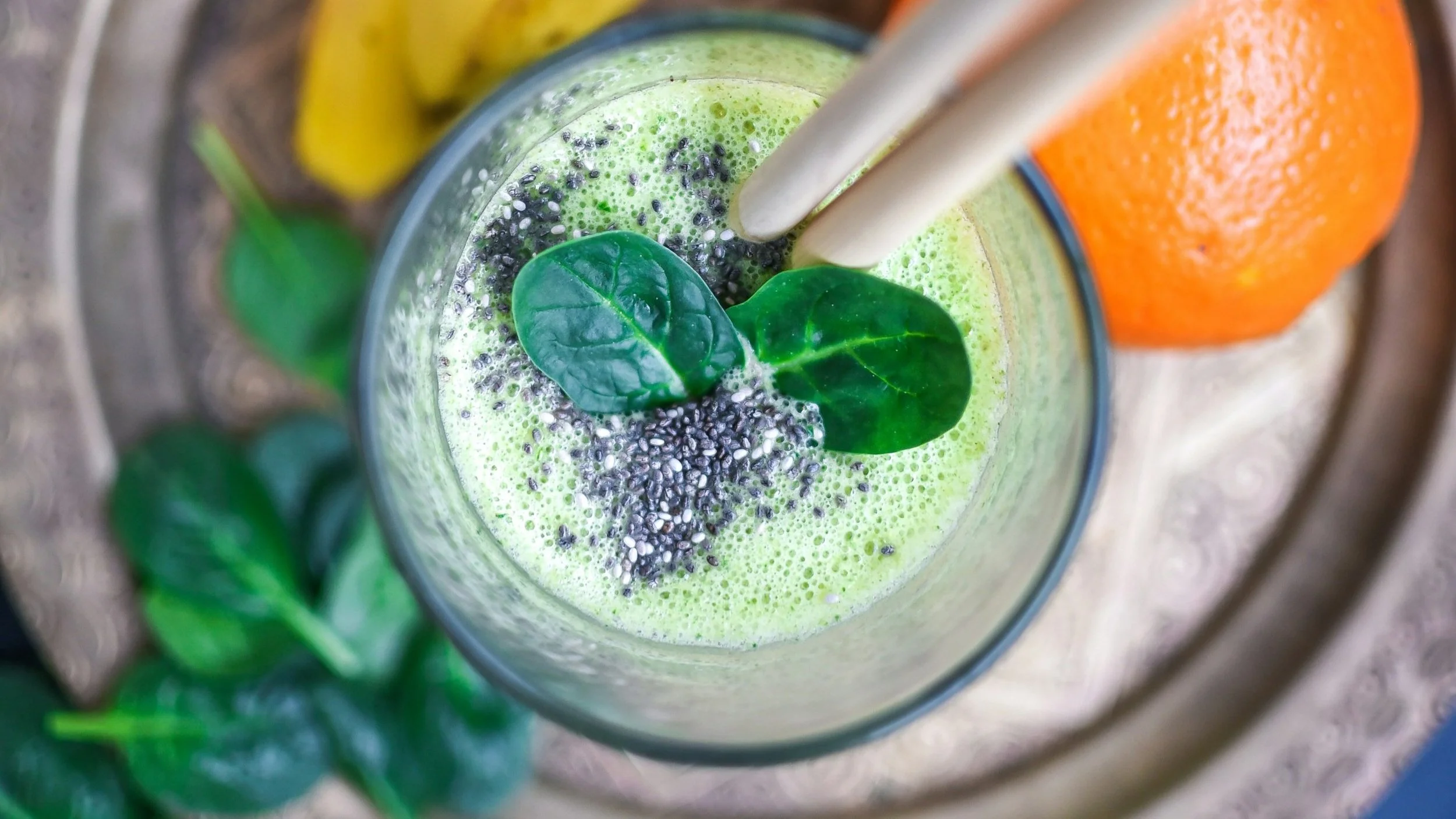Crafting Your Personalised Anti-Hot Flash Menu: Delicious Recipes for Cooler Days & Nights (Part 2)
Welcome back! In our previous post, "Soothe the Sizzle: Your Essential Food Guide to Managing Hot Flashes & Night Sweats (Part 1)," we explored how diet plays a crucial role in managing those unwelcome heat waves and nighttime sweats during menopause. We covered the science behind why food matters and highlighted the key "Power Player" foods to embrace, as well as the "Culprits" to limit.
Now, it's time to put that knowledge into delicious action! This second part of our guide is all about giving you practical, flavourful, and diverse recipe ideas to help you implement an anti-hot flash eating plan. The goal is to make healthy choices easy and enjoyable, supporting your body from the inside out.
Remember, finding what works best for you is a personal journey. Start by gradually incorporating these ideas, observe how your body responds, and feel free to adjust to your tastes and needs. Consistency is key, and with these recipes, you'll be well on your way to a more comfortable, cooler you!
Delicious Recipes to Cool Hot Flashes & Night Sweats
Here are some diverse and refreshing meal ideas packed with ingredients known to help manage menopausal symptoms:
Breakfast Ideas:
Cooling Berry & Flax Smoothie:
Why it helps: Berries are packed with antioxidants, flaxseeds provide phytoestrogens and Omega-3s, and the cold temperature is naturally cooling.
Recipe: Blend 1 cup mixed frozen berries (strawberries, blueberries, raspberries), 1 tablespoon ground flaxseeds, 1/2 cup unsweetened almond milk (or your preferred plant milk), 1/4 cup plain Greek yogurt (optional, for protein), and a few ice cubes until smooth. Add a small piece of ginger for an extra anti-inflammatory kick.
Oatmeal with Sliced Peaches & Walnuts:
Why it helps: Oats are a whole grain, stabilizing blood sugar. Peaches are hydrating and provide natural sweetness, and walnuts offer beneficial Omega-3s.
Recipe: Cook 1/2 cup rolled oats with 1 cup water or unsweetened plant milk. Once cooked, top with fresh or frozen sliced peaches (thawed if frozen) and a handful of chopped walnuts. A sprinkle of cinnamon can also be a nice, warming (but not hot flash-inducing) touch.
Lunch Ideas:
Edamame & Veggie Power Bowl:
Why it helps: Edamame is a prime source of phytoestrogens. Loaded with diverse vegetables, this bowl provides fiber and antioxidants.
Recipe: Combine 1 cup cooked and shelled edamame with 1/2 cup cooked quinoa (or brown rice). Add chopped cucumber, cherry tomatoes, shredded carrots, and thinly sliced bell peppers. Dress with a light vinaigrette made from extra virgin olive oil, lemon juice, a hint of garlic, and fresh dill.
Mediterranean Chickpea Salad Wraps:
Why it helps: Chickpeas offer fiber and some phytoestrogens. Fresh vegetables provide cooling hydration and nutrients.
Recipe: Mash 1 can (15-ounce) drained and rinsed chickpeas with a fork. Mix with finely diced celery, red onion, and fresh parsley. Stir in 2 tablespoons plain Greek yogurt (or a dairy-free alternative), 1 tablespoon extra virgin olive oil, lemon juice, and a pinch of salt and pepper. Serve spooned into large dark leafy greens (like romaine or butter lettuce leaves) or spread onto whole-wheat wraps.
Dinner Ideas:
Baked Salmon with Roasted Asparagus & Quinoa:
Why it helps: Salmon is rich in anti-inflammatory Omega-3s, crucial for overall well-being during menopause. Asparagus provides vitamins and antioxidants.
Recipe: Season salmon fillets with lemon slices, a dash of garlic powder, and fresh dill. Roast alongside asparagus spears (tossed with a drizzle of olive oil) at 400°F (200°C) until salmon is cooked through and asparagus is tender-crisp. Serve with a side of fluffy quinoa.
Miso-Glazed Tempeh & Stir-Fried Greens:
Why it helps: Tempeh is a fermented soy product, packed with phytoestrogens. Miso supports gut health, and dark leafy greens are nutritional powerhouses.
Recipe: Whisk together 2 tablespoons white miso paste, 1 tablespoon rice vinegar, 1 teaspoon grated ginger, and a splash of water to create a glaze. Pan-fry sliced tempeh in a little olive oil until golden, then brush with the miso glaze. Separately, quickly stir-fry broccoli florets and a generous amount of kale or bok choy with minced garlic in a little olive oil until tender-crisp. Serve the tempeh and greens with brown rice.
Snack Ideas:
Cooling Cucumber Slices with Hummus:
Why it helps: Cucumbers are incredibly hydrating and refreshing. Hummus provides plant-based protein and fiber from chickpeas.
Recipe: Slice a cucumber into rounds. Serve with a dollop of store-bought or homemade hummus. For an extra boost, sprinkle with chia seeds or flaxseeds.
A Handful of Walnuts & Dried Cherries:
Why it helps: Walnuts are a top source of plant-based Omega-3s. Tart cherries are renowned for their anti-inflammatory properties and can be particularly beneficial for calming the body.
Recipe: Simply combine a small handful of walnuts with a few dried tart cherries for a quick and satisfying snack.
Plain Greek Yogurt with Ground Flaxseeds:
Why it helps: Greek yogurt offers protein, and flaxseeds deliver those beneficial phytoestrogens and Omega-3s.
Recipe: Mix a tablespoon of ground flaxseeds into a serving of plain, unsweetened Greek yogurt. You can add a tiny drizzle of maple syrup if you prefer a touch of sweetness.
The Takeaway
Adopting an anti-inflammatory diet is a powerful step towards managing hot flashes and night sweats during menopause, and it's also a fantastic way to boost your overall health and well-being. As you incorporate these delicious, nutrient-rich recipes into your routine, you'll actively support your body in reducing inflammation, balancing hormones, and ultimately moving through menopause with greater comfort and ease. Experiment with these ideas, discover your favourites, and enjoy your journey to a more comfortable, cooler you!
Want more Help to Start Easing those Hot Flushes / Night Sweats and other Menopause Symptoms Naturally?
Why not download our free 7 Days to Healthier Hormones Guide to get you started. It’s designed to gently help reduce inflammation, nourish your body, and give your hormones the support they need to ease symptoms like hot flushes, joint pain, stiffness, and bloating and other digestive issues too.
Inside you’ll get:
An easy-to-follow hormone-supportive meal plan
Anti-inflammatory recipes that help calm the system
Daily tips to support detox, lower stress, and feel more like yourself again
Ready to give your body the reset it’s craving? Download your copy here: 7 Days to Healthier Hormones Food Guide
Because moving through menopause shouldn’t have to hurt and sometimes, the smallest shifts can bring the biggest relief.
Disclaimer:
At Hello Mimi, we’re here to support and empower you with education, encouragement, and practical tools but we’re not a substitute for personalised medical advice. The information in this blog is for general guidance only. Always consult a qualified healthcare provider before making changes to your health, diet, or supplements especially if you're managing a condition or taking medication.

